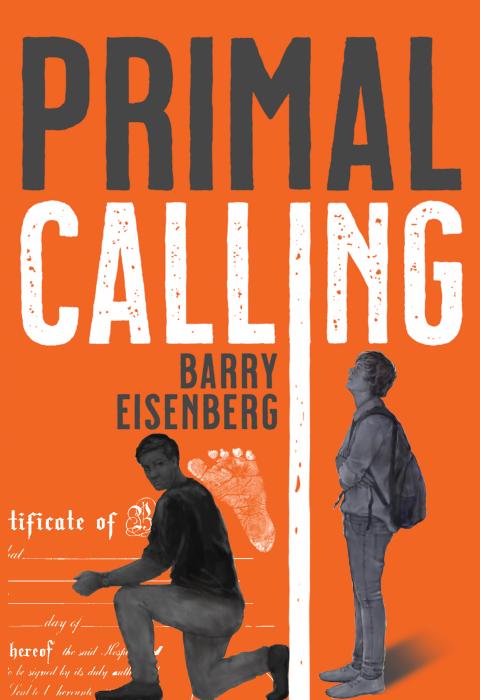Emerging From the Fog of Burnout
A few weeks ago, I went to a local lab for routine bloodwork, the yearly ritual in preparation for my annual physical. The waiting room, unusually quiet for a weekday morning, was bathed in soft, cool light, casting a frosty blue gleam across the surfaces of the clinically white vinyl chairs. A single laminated poster on the wall reminded patients to hydrate before their blood draw. I smiled, proud of myself for finally remembering to do that, as I finished the last of my water.
After less than a five-minute wait, a phlebotomist stepped into the waiting room and called my name. His voice was flat, almost mechanical. He was young, maybe early thirties, sporting a lanyard weighted down by an ID badge.
I followed him into the cubicle, and even before I sat down, he curtly asked, “Which arm?” while never looking up.
Despite having spent my life working in hospitals, I still feel a small flicker of anxiety when giving blood. It’s a mix of anticipation and vulnerability, offering your arm to a stranger with a sharp needle, trusting they’ll hit their mark with nothing more than a minor pinch. A little warmth, a reassuring smile, anything human, goes a long way in those situations.
I noticed the name on his badge: Marcus.
Hoping to melt the icy silence in the room, I asked, “So, Marcus, have you worked here long?”
He didn’t look up. “About a month,” he replied, his tone suggesting the conversation wasn’t necessary..png)
Still, I couldn’t help but detect a faint tremor in his voice, an impatience that wasn’t about me at all, but a burden he seemed to carry that seeped into the space between us.
“Seems like a nice lab. You like it here?” I ventured, as he gathered the collection of vials that would soon house samples of my blood.
He hesitated. “Better than my last job.”
There it was, a small crack in the wall, something unguarded behind the hardness.
“Oh? Where were you before, if you don’t mind my asking?”
He named a well-known hospital.
“I know it well,” I replied. “In fact, I knew people who worked there. They didn’t have an easy time of it in the last few years.”
And suddenly, a sliver of light flashed through the crack. Marcus looked at me for what was really the first time since I walked in. A quick assessment of my trustworthiness, and then what poured out was not small talk. It was a story, his story, told with the subdued weight of someone who had been carrying it quietly for a long time.
Marcus shared that he started as a patient transporter straight out of high school. “I didn’t know what I wanted to do,” he said. “But I liked helping people, and working for a hospital was a steady job.”
Transporters traverse the labyrinth of hospital hallways, shuttling patients from their rooms to imaging, to surgery, to rehab, and back again. It’s one of the few roles that touch every corner of the institution.
Marcus explained that he had found joy in helping ease patients through their small moments together, laughing as a nervous patient cracked a joke, expressing admiration as an elderly man told him about his Navy days, asking the name of a stuffed bear a child clutched tightly on the way to an X-ray.
After a couple of years, a phlebotomist he had befriended encouraged him to train for the job. It paid better, and with his fiancée pregnant with their son, the extra income mattered.
For a while, things were working out well. He liked the precision of the work, the way his hands grew more confident with each draw. Then the hospital ran into financial problems. Layoffs followed. Marcus’s workload jumped. Not dramatically, he said, but significantly. Ten percent more patients. Occasional mandatory overtime.
“At first, I liked the overtime,” he admitted. “Extra pay, you know? But then it started eating into everything else, my evenings, weekends, time with my son.”
But the real toll wasn’t just the hours. It was the shift in atmosphere across the hospital.
“You could feel it everywhere,” he said. “Like the whole hospital was waiting for something, like it was holding its breath.”
I’ve seen this in some hospitals that I’ve done consulting projects for, where employees feel so overworked that stress spreads like fog through hallways and break rooms. Supervisors seem on edge all the time, like it’s routine. People lash out at each other over small things. When employees are asked to do more than what’s reasonable, it starts feeling like an overworked machine trying to keep running on fewer parts. That’s what Marcus was in the thick of.
And then he told me about her.
Eleanor was an elderly patient admitted for a stubborn urinary tract infection. “She was tiny,” he said softly. “Her arms looked… fragile, like twigs.” Marcus explained that she was uncomfortably restless, twisting and wincing as he tried to find a vein.
Stress had become his constant companion by then, and that day it perched heavily on his shoulder. He explained how he took a beat to gather himself, then gently approached her, offering some words of reassurance. But his hands were already tight, his mind calculating the time slipping past.
The more he tried, the more the needle missed. Her anxiety rose with his. Her thin skin bruised easily. “I hated that I was hurting her,” he sighed. “I just… hated it.”
Ten minutes passed in what felt like an hour. Finally, he secured a vein in her forearm, not ideal, but workable. He apologized to her, and she forgave him instantly. “She even smiled,” he said, his eyes drifting to the corner of the room. “I don’t know how she did that, reversed our roles, trying to calm me when I should have been comforting her.”
Marcus then explained that while he was with Eleanor, he had fallen behind schedule and was hit with a call from his supervisor demanding an explanation. He tried to describe the difficulty of the blood draw, the patient’s frailty, the need to be careful, but the response was clipped, brisk. “Everyone’s behind,” his supervisor snapped. “Just move faster.”
He didn’t blame his supervisor. “She was stressed too,” he said. “Everyone was. It was like the building was vibrating from it.”
As much as he was physically exhausted, it was the emotional drain that was getting to him, Marcus confided, adding that all this was taking a toll on his family. He shared that when he went home that night, he barely had the strength to stagger through the door. His toddler ran to him, arms open, babbling excitedly. His wife was setting the table.
But Marcus felt something pressing in his chest. It was a heaviness he couldn’t shake. He didn’t want to bring that weight into the kitchen, into their evening. So, he mumbled something about needing a moment and went straight to the bedroom. He ate there alone.
Marcus admitted that this became a pattern.
“It’s not that I didn’t love helping the patients,” he told me. “It’s that I didn’t recognize who I was anymore.”
Listening to him, I felt the human cost of a healthcare system stretched too thin. Burnout in healthcare isn’t a mystery. It’s a predictable consequence of chronic stress, inadequate staffing, and the emotional labor of caring for people at their most vulnerable. Professionals like Marcus absorb patients’ fear, pain, urgency, sorrow. When systems fail to support them, when workloads rise and resources shrink, the emotional reservoir empties quickly.
About 40% of healthcare workers experience burnout. That’s millions of people! But behind that staggering number are human beings like Marcus, good, earnest, hardworking people who entered this field to make a difference, only to find themselves running on fumes.
As he finished labeling the vials, Marcus looked me in the eyes. Not for long, but long enough. “I like it better here,” he said quietly. “It’s calmer. More manageable. I spend more time with my little boy.”
I smiled. “I’m glad,” I said. “People sometimes sacrifice that precious time. Good for you for making sure you don’t. Thank you for sharing that.”
As I left the lab, a thought lingered: The talk among colleagues sometimes assumes that burnout among healthcare workers is inevitable, a cost of doing business. But it’s not. It’s a signal, one we ignore at our peril, that the people caring for us need care too.
I’ve worked in healthcare my entire career, in senior management and as a consultant to many hospitals, and I’ve seen how burnout can gradually become woven into the culture. People begin to see it as an unavoidable part of the job, an unfortunate but expected side effect of working in such a demanding environment.
At its worst, burnout can be deeply damaging. It can rob someone of the pride and sense of purpose that should come naturally to people who devote their lives to helping others.
And the impact doesn’t stop with staff. Patients feel the effects too. When burnout takes hold, mistakes are more likely, patience wears thin, and the overall quality of care begins to slip.
Overwhelmed and under the relentless pressure of an impossible patient load, a wonderfully dedicated nurse I know was forced to choose speed over safety. She confessed with deep regret that she recently rushed a critical medication explanation, believing she may have left a vulnerable patient confused about its safe use.
But I’ve also been fortunate to see a different approach, hospitals that take the well-being of their employees seriously. These organizations listen to their staff, look for barriers that make the work harder than it needs to be, and make thoughtful changes to ease the pressure.
to their staff, look for barriers that make the work harder than it needs to be, and make thoughtful changes to ease the pressure.
When employees feel supported, when they feel they have the space to breathe, think, and connect with patients, the whole atmosphere shifts. Absenteeism drops, employees stay longer, and they bring more energy and insight into their work. They’re also more inclined to come forward with ideas that make care better and safer.
Unsurprisingly, when burnout decreases, a hospital’s finances often improve too. Here’s just one tidbit. Replacing a single nurse who resigns costs a hospital about $50,000. That covers things like recruiting for a replacement, training them, and the lost productivity while the new nurse gets up to speed.
In the long run, supporting employees isn’t just the right thing to do. It benefits everyone, including – and especially – the patients who are at the heart of the hospital’s mission.
Sadly, Marcus’s experience is not rare. But it should be. And maybe telling his story is one small step forward.

